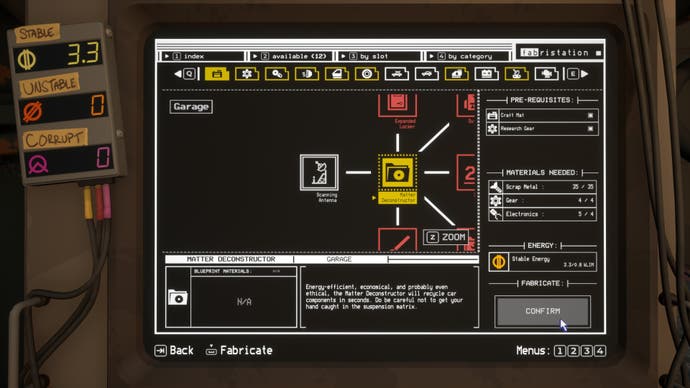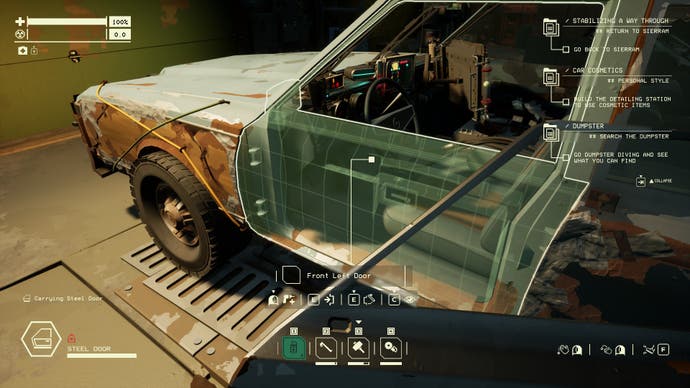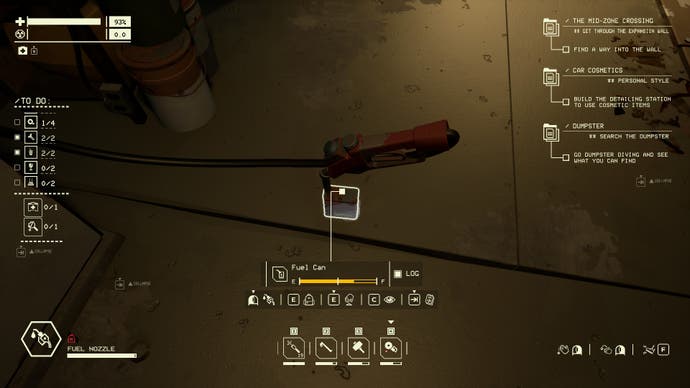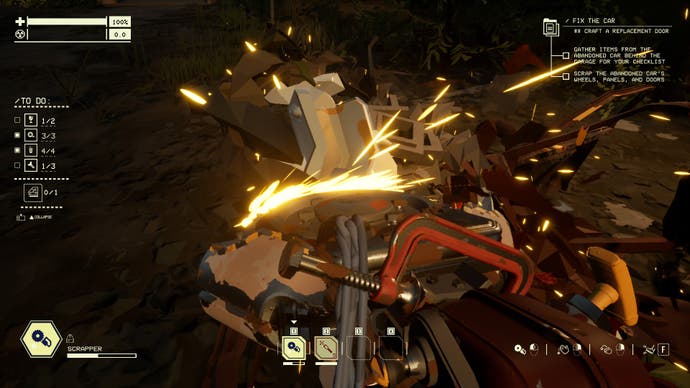I can't remember if it was EA or LucasArts that canceled 1313, but yes it was canceled regardless. This might rekindle that hype, or reopen that wound for meDidn't they cancel a star wars game where youd play as a bounty hunter not too long ago?
General Gaming News.
- Thread starter BrawlMan
- Start date
EA canceled it. This around that time they started the "single player games are dead" mantra, and anything that wasn't fully a dedicated multiplayer, nor had an mp mode, got the axe.I can't remember if it was EA or LucasArts that canceled 1313, but yes it was canceled regardless. This might rekindle that hype, or reopen that wound for me
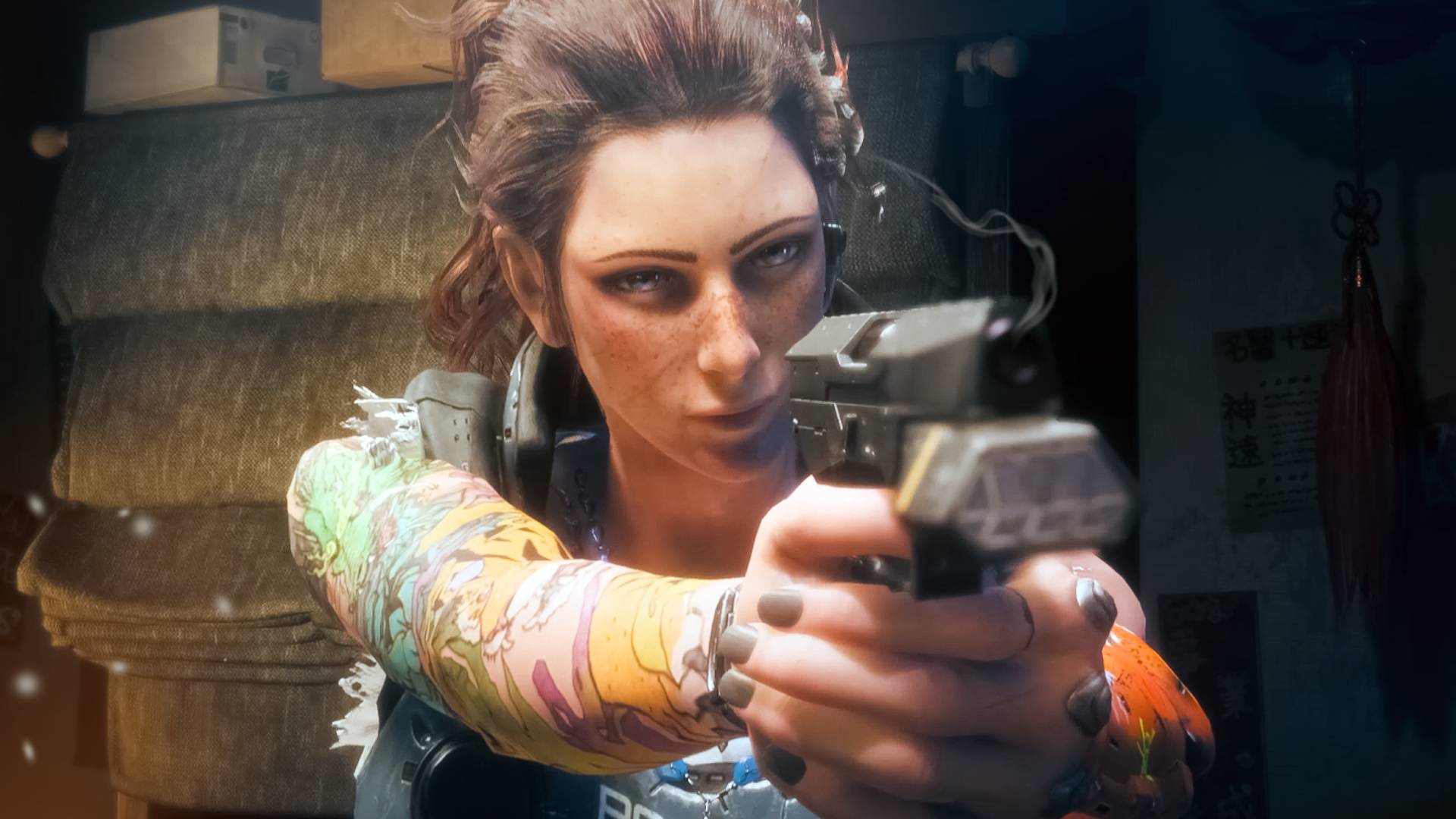
2023’s most underrated action game gets much-needed boss overhaul
2023's most underrated action game, Wanted Dead, finally gets the boss overhaul it needs, with this new patch updating checkpoints, too.

Wanted: Dead Gets Anniversary Patch, Sale - miso!
Wanted: Dead has an anniversary patch and sale just in time for the game's first year on the market! Check out more on Miso!
 miso.moe
miso.moe

Madcap Action Game Wanted: Dead Gets an Update Almost One Year After Release
Not dead yet
Fans have been asking for a DMC1 and DMC2 remake since the release of DMC4. I see no point in remaking Viewtiful Joe, as the game is still to near perfection. Other than more checkpoints, and nerfing Red Hot 100, there is not much to remake. Give me an HD remaster, and that's more than enough.
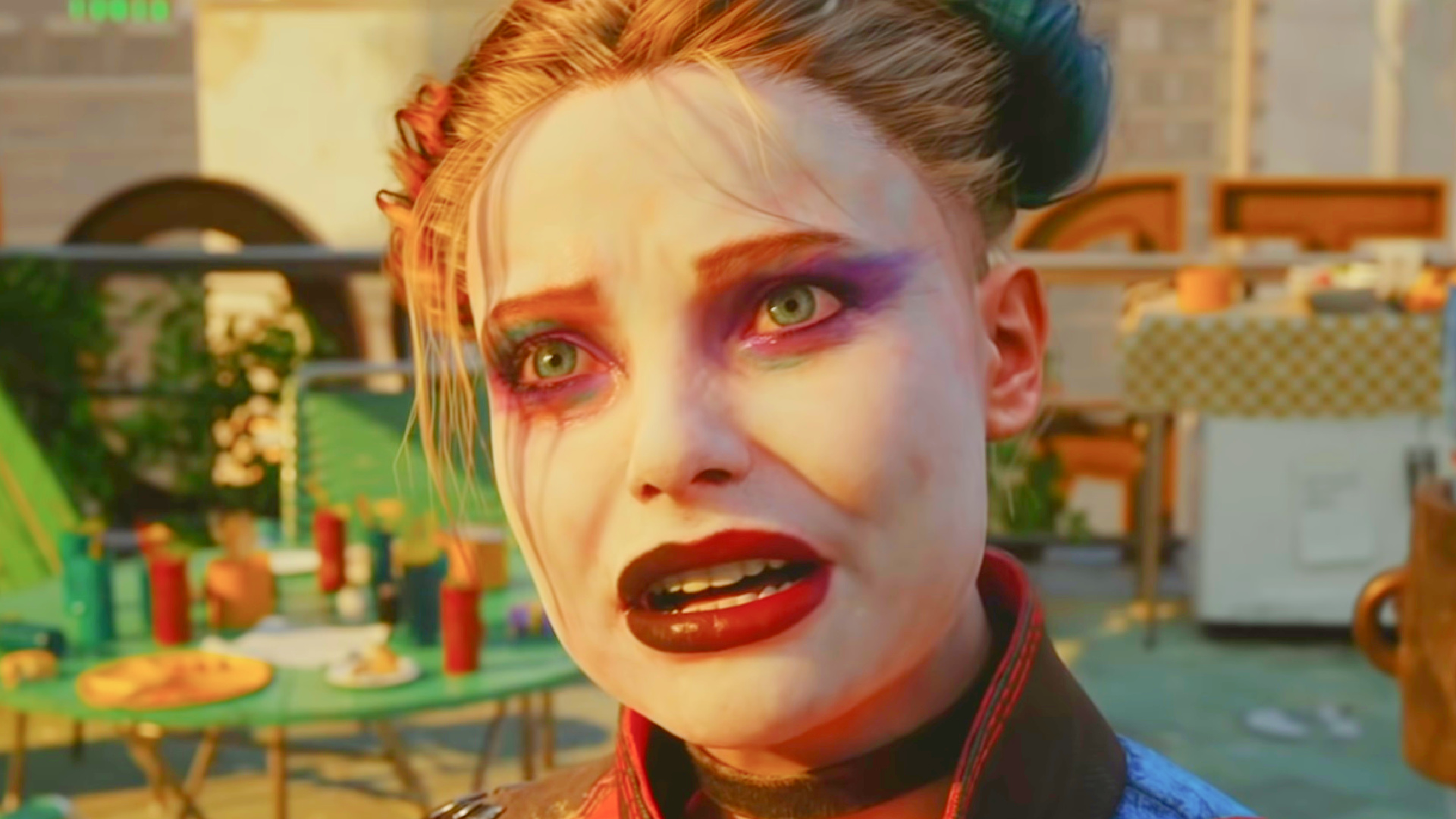
Suicide Squad Kill The Justice League has good reviews but less than 1,000 players
Suicide Squad Kill The Justice League, from Rocksteady Studios, is struggling to maintain its player count on Steam despite good reviews.

Barely anyone is playing Alex Jones' cringeworthy video game
Alex Jones' foray into video gaming isn't going as well as hoped after an already tiny player base is dwindling fast.
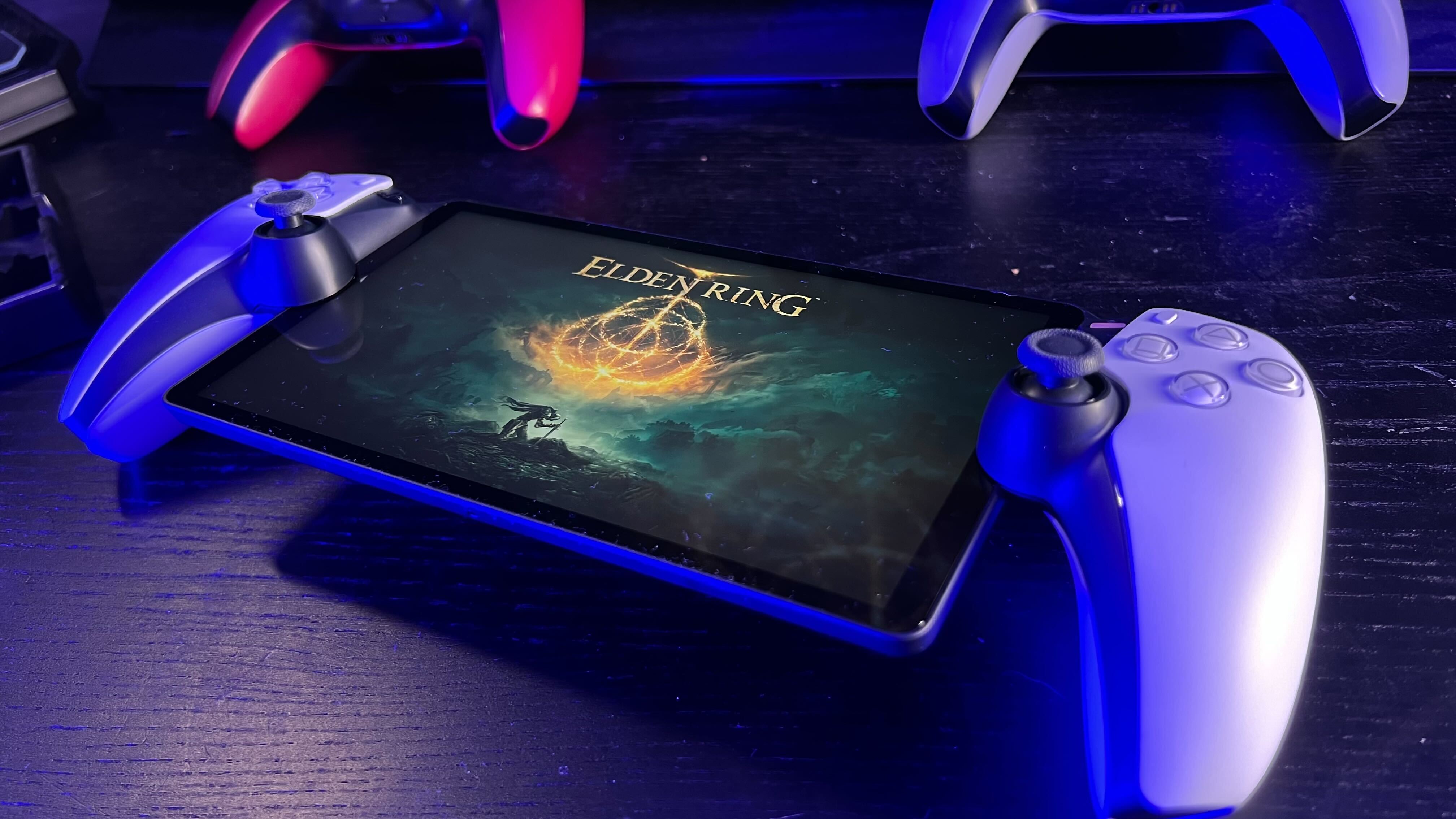
PlayStation Portal has been hacked to run PSP games offline | VGC
The exploit is the work of Google security engineers…

Helldivers 2 prompting people to rediscover Starship Troopers, which game director says is "incredible"
Cult 90s sci-fi film Starship Troopers has had a bit of a renaissance of late, which has been attributed to the releases of Helldivers 2
tho robocop may be needing a welfare checkCult 90s sci-fi film Starship Troopers has had a bit of a renaissance of late, which has been attributed to the releases of Helldivers 2 on PlayStation and PC.
According to online TV ratings tracker Television Stats, the 1997 release has seen its viewership stats, Wikipedia rank, and IMDB rank all see a significant rise over recent days.
A quick browse through social media will see several posts linking this renewed interest in Starship Troopers with the release of Helldivers 2 earlier this month, and this hasn't passed the game director by. Sharing some stats on X showing an increase in Starship Troopers' popularity, Johan Pilestedt said: "This is incredible!"
What's more incredible is the film's popularity has actually risen 20 places since Pilestedt's comment. According to the tracker, Starship Troopers is currently the 25th most popular film online at the time of writing. It was sitting at #45 a few days ago.
Image credit: Television Stats/Eurogamer
All in all, that's not bad for a film that was released almost 27 years ago with very little critical acclaim.
Helldivers 2 has seen some incredible numbers since it was released. Its current player peak on Steam is 411,359. This is an increase since the weekend, when the game overtook records for Steam stalwarts such as Rust, Destiny 2 and even GTA5.Watching Starship Troopers tonight in honor of Helldivers 2.
I highly recommend the 4k UHD, it looks greatTo see this content please enable targeting cookies.Manage cookie settings
"With its high-chaos, high-comedy firefights, Helldivers 2 is a riot to play with friends," Emma Kent wrote in Eurogamer's four star review.
"Despite the issues surrounding matchmaking, when Helldivers 2 works, it's a wonderfully slapstick co-op experience. Unexpected and memorable events seem to occur in nearly every battle, and I already have a stock of ludicrous stories from my first week with the game."
Here's hoping, that the parts of misaimed fandom, don't rear their ugly head again. From the get-go that I saw this game, I already knew this game wants to be the Starship Troopers movie. The game is basically an unofficial license.Inshallah

Helldivers 2 prompting people to rediscover Starship Troopers, which game director says is "incredible"
Cult 90s sci-fi film Starship Troopers has had a bit of a renaissance of late, which has been attributed to the releases of Helldivers 2www.eurogamer.net
tho robocop may be needing a welfare check

Elden Ring Trademark Is Now Fully Owned by FromSoftware - IGN
Early last year, FromSoftware fully acquired the trademark for Elden Ring from the game's publisher Bandai Namco.
With an expansion reveal likely around the corner, this is hopefully a good sign of keeping MTX’s at bay, given BN’s recent bs with Tekken 8. Gotta wonder what that boardroom meeting was like, for them to hand over an IP like this. The smithing stones on Miyazaki-san.
Last edited:
Yeah, the first game was similar though slightly less overt, while the sequel seems to intentionally make the links much clearer and harder to ignore. Have always said the original was the best videogame adaptation of the film lol.Here's hoping, that the parts of misaimed fandom, don't rear their ugly head again. From the get-go that I saw this game, I already knew this game wants to be the Starship Troopers movie. The game is basically an unofficial license.
-
Pacific Drive looking good so far, sounds like Stalker but with a car on roguelike journey into a 'The Mist' type government classified scientific disaster! 2 days left to wait
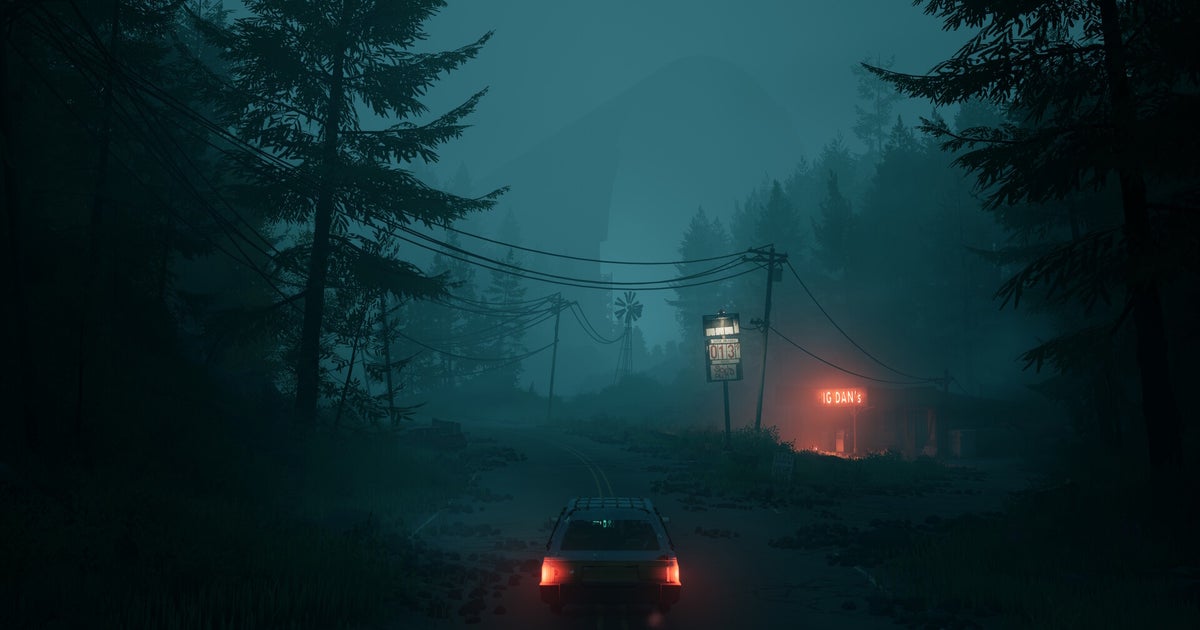
Pacific Drive review - an exhausting, oddly lovable nightmare
Eurogamer's review of Pacific Drive, a punishing, anxiety-inducing game with an oddly lovable loop.
(only usually post from same outlet most the time cos is just easier to copy/paste without intrusive ads circumventing free phone blocker, not from any sense of implied agreement or misplaced loyalty - these thoughts are not legally my own lol!)
The other day I read an old interview with Hidetaka Miyazaki, the FromSoftware director behind Dark Souls and Elden Ring, and it seems particularly relevant here. "I'm a huge masochist, so when I make games like these… this is how I want to be treated," he said. "'I want to be killed this way!' That's how I make it! It's just that sometimes other people don't understand it; it's for my pleasure." His interviewer interjects: "Really? You want to be killed deep in the forest, getting punched by a huge mushroom?"
Pacific Drive review
"Yes, yes. And the curse area… When I get cursed–"
- Developer: Ironwood Studios
- Publisher: Kepler Interactive
- Platform: Played on PC
- Availability: Out 22nd Feb on on PC (Steam, Epic) and PS5
Interviewer: "You want to die from a barrage of arrows?!"
Miyazaki: "It's gratifying. I like that, I just wanted to emphasise it!"
Hidetaka Miyazaki would love Pacific Drive. On my roadbound quest into the heart of this game's cursed and recalcitrant Zone I've been battered, smashed and crashed. Zapped, snagged, blasted with radiation, lobbed into a ditch, fired into a tree and also, more than once, lightly bonked on the head by my own car's boot when trying to close it.
The difference here, in the relentlessly damp Pacific Northwest, is that it's actually quite rare any of these lead to a proper death; instead it's the preface to a heavily bruised return to your little safehouse of a garage, where you shake out pockets full of hastily extracted shrapnel, patch yourself up, patch your car up, and go back out there for another round. Somehow, that feels even more masochistic than death by barrage of arrows: it's an elective pulverisation you get to live out over and over again. Survival only ever a function of escape, never triumph. And unlike Miyazaki-san and his taste for mushroom-bludgeoning, I'm yet to decide for certain whether I actually enjoy it.
All of this, I have to stress, is absolutely intentional. Pacific Drive is ostensibly a loot-and-craft survival game, laced with a bit of environmental horror - but it's also a comedy, not unlike the way FromSoftware's games are inescapably funny, or more recently Helldivers 2. And it's also, in some ways, a kind of Roguelike - a structure that's essential for its best moments but also at the heart of some of its struggles.
While driving around the lovely forests, somewhat inexplicably close to the fabled Zone, a long-evacuated government experimentation ground surrounded by warning signs, an air of impending doom and a big, 300-metre wall, you suddenly find yourself zapped inside. Things start getting a little weird, as they tend to do here, and your only means of escape is via the one strangely functioning car nearby, at the direction of a few Zone-curious oddballs who pick up your single and send one-way directions over the radio. They get you to the safehouse - a garage maintained by a wizened and excessively blunt disembodied voice called Oppy, which serves as your base. From here, you must venture out on scavenger hunts for radio antennas, reconnaissance missions and above all, raw materials, from which you craft more resilient wheels and door-panels and headlights that allow you to venture further - to gather more, to venture further, and you know the rest, the end goal being your escape, and maybe a bit of classic mystery solving along the way.
Image credit: Kepler Interactive / Eurogamer
The first handful of runs - you can either follow the main story to specific areas or explore other ones for resources or nuggets of lore - will be brutal. Pacific Drive has a deluge of systems, all bolted on somewhat excessively, much the same as your side floodlights and spare fuel tank and roof rack storage compartment will be to your knackered old estate car as you get further into things. At first they're overwhelming. The upgrade tree is vast, the range of basic and advanced resources wide, the breadth of things you can do - and things you need in order to do them - wider than the space you have in your backpack and boot storage to carry them all.
And that doesn't even factor in the UI, a haze of tap-for-one-thing, hold-for-another obfuscation, which must have at least partially been designed to be deliberately awkward - a little prank, an opportunity for more gallows humour. I swiftly unlocked one achievement for trying to move the car 20 times without taking it out of park. All the functions of the car - windscreen wipers, headlights, doors, ignition, the map - are manual and as such also wonderfully tactile. Cue endless sequences of rushing back to the car as everything in the region inevitably crumbles again, turning on the windscreen wipers instead of the ignition - turning the ignition off when it was already on, shutting the boot on your head (again). And then the many, many status conditions your car and be lumbered with. One headlight's smashed, the driver's door's gone, the rear-left tire's on its way to flat, everything's flickering with strange blue energy because I just rammed into a surprise-bollard charged with Zone-electricity and also, getting a bit low on fuel.
Image credit: Kepler Interactive / Eurogamer
Wow, is this game exhausting. And at first it's too much, the mix of confusion, apparent design sadism, constant risk of a fate worse than death - being teleported back to the garage without any of your resources, with them saved out there in the distant reaches of the Zone waiting for your recovery, and all that time you invested in preparation and repairs and navigation itself just gone. But then: the Roguelike.
To the rescue, the real magic of that genre appears, as the balance of power in Pacific Drive shifts, ever so subtly, with each completed or even uncompleted run. Fuelled by new resources but also new knowledge - not just the kind you log in-game from scanning anomalies and structures, but real knowledge learned from mishaps, errors and failures. Eventually you gain not mastery over the Zone, but a kind of mutual respect, a wary, reluctant coexistence. I won't trouble you, on this run, by taking out any of your anchors beyond the one I need to get home, if you'll let me pootle about in something close to peace between all these abandoned houses and rusted out cars.
For much of my time in Pacific Drive I tried to think about who the main character was - something that never really matters, in all honesty, but makes for a good line when summing things up. It's not you, in-game - in first-person and restricted to receiving one-way radio chatter, you don't even see your own hands or feet, or grunt crashing into another tree, let alone speak. The easy answers are probably the Zone, or the car, each with personalities of their own - the first capricious; the second, dare I say it, a little bit of a wise-arse? Don't honk at me like that - but even that feels a bit simple.
Image credit: Kepler Interactive / Eurogamer
In reality I'm not sure there is one at all. At best it might be the garage. Here, between the intense and at times openly unenjoyable ventures into the wilderness you do the real playing of Pacific Drive. The tinkering, refining, upgrading and mapping. But also the deduction, lesson-learning and planning. There's a wonderful little system that sums this up, my favourite thing about Pacific Drive - the thing that, actually, makes me think I actually do enjoy this horrible torture garden of a game - in the diagnostics machine for something called "quirks".
Quirks are strange behaviours your car seems to pick up at random. But, nefariously, these introduce themselves to you before you're introduced to them. At one point the car's bonnet kept opening at extremely inopportune times - during the mad dash to the extraction point, when reversing frantically away from some mannequins which are static but definitely do move into new positions when you look away, etc. Turns out this was a quirk, and they're diagnosed and solved through some simple logic and a bit of guesswork - intentionally, ingeniously, like a real mechanic might go about fixing things themselves. Tap your theory into this little retro DOSBox computer interface and you might get your solution. Car > Moves Slowly > Bonnet > Opens - false. Stick > Shifts to Drive > Bonnet > Opens - bing! Correct. Fix it with a mechanic's kit, which you can craft.
Pacific Drive accessibility optionsAt one point a had a few of these running at once - resources were scarce, and they were minor annoyances rather than anything too impactful (which they certainly can be). And so in one particularly ridiculous sequence I had a quirk that popped open the passenger door every time I put it into park, headlights that flickered whenever the car moved and a horn that honks every time I shut the boot. So collecting those anchors as the world dissolves into a glowing, red-hot radioactive super-storm around you becomes: stop, clunk (that's the passenger door), grab the orb, things kick off, load it up, remove flat tire, grab spare tire from boot, attach, shut the boot - bonk, ow - move head, shut the boot properly - meep! - back in the door, engine on, and drive off, doors a-flapping and lights a-flashing, into the sunset.Lightning toggle on/off. Motion sensitivity settings (eg "tumble hiding" for black out vision when in a tumbling car, camera bob, etc.). Assistive camera settings. Colour deficiency modes, rain drop effect toggles and other vision settings like brighter nights, particle intensity, fog intensity. Additional HUD warning toggles. Remappable controls, viewabale control scheme, viewable explanation of systems in menu. Subtitles, independent volume sliders, radio settings.
You can see why that Miyazaki line's been stuck in my head. Pacific Drive starts as sadism, a series of cruel brutalisations at the hands of just about everything developer Ironwood Studios can manage - environments, enemies, atmospheres, systems, mechanics, menus and the actual user interface itself. Eventually, if you push on through, it becomes masochism. Lucky you! Pacific Drive amounts to horrible pain, but at least it's pain you opted into.
A copy of Pacific Drive was provided for review by Kepler Interactive.
At first I thought that was one of those satirical bits like this one, but nope lol.
Pacific Drive review - an exhausting, oddly lovable nightmare
Eurogamer's review of Pacific Drive, a punishing, anxiety-inducing game with an oddly lovable loop.www.eurogamer.net
It’s pretty funny though.
Isomura: Why didn't you include an opening cinematic? I wanted to sing "Ah Aaah!" [Tomomi is referencing Demon's Souls intro, with the chorus started singing]
Miyazaki: The opening cinematic we made is in the beginning, before the title screen and the character creation. It wasn't at the start because this time the movie told the story. In Demon's Souls it started more like a "slideshow" and it became a CG movie. We didn't make one for Dark Souls because, well, you probably don't want to hear about that…
Isomura: Ah, I see.
Miyazaki: I understand the desire to sing "Ah, Aaah!".
Murohashi: It was impressive.
Isomura: Yes, it did leave quite an impression, indeed!
Isomura: Quelana… is she single? Does she have a boyfriend? Did she go out with Salaman?
Miyazaki: What?!
Miyazaki: What is this?
Isomura: A question!
Miyazaki: As for boyfriend, I don't think she has a boyfriend, believe me.
Miyazaki: Salaman is not like that, no. First of all, there are different species. Quelana is a daughter of the Witch of Izalith, so regarding on reproductive actions, who knows if it's even possible!
Isomura: It could be platonic love!
Miyazaki: Basically they are different species and she's without a doubt a good character. If you go for romance options, of all the female characters, she's quite desirable.
Isomura: About Logan now. Freke from Demon's Souls was in a place easy to find, and Logan… well, he isn't that easy to find. Is it their destiny for the sages to be trapped? Is this another cliché?
Miyazaki: Yeah!
Isomura: Why is Logan naked when he goes hollow? Is it because he got so excited after unraveling the secrets of the crystals?
Miyazaki: You mean at the end, where you fight him instead of Seath? Why is he naked? Why is he nude? I wonder. He may have achieved enlightenment! I wanted to show that he didn't go hollow, but he "achieved enlightenment". You know, literally opened up to knowledge.
Murohashi: Something "opened"?
Miyazaki: Yes, something "opened". I wanted to show that something "opened". There were limitations in the game to express that within the game itself, so… he's naked.
Isomura: Nude.
Miyazaki: He's still wearing the hat, so it's confusing, but something "opened".
Murohashi: There's like an "enlightenment" to it.
Miyazaki: Exactly. Something "opened", something unusual. Something was liberated, something eye-opening. Similar to that, yes.
Miyazaki: What?!
Miyazaki: What is this?
Isomura: A question!
Miyazaki: As for boyfriend, I don't think she has a boyfriend, believe me.
Miyazaki: Salaman is not like that, no. First of all, there are different species. Quelana is a daughter of the Witch of Izalith, so regarding on reproductive actions, who knows if it's even possible!
Isomura: It could be platonic love!
Miyazaki: Basically they are different species and she's without a doubt a good character. If you go for romance options, of all the female characters, she's quite desirable.
Isomura: About Logan now. Freke from Demon's Souls was in a place easy to find, and Logan… well, he isn't that easy to find. Is it their destiny for the sages to be trapped? Is this another cliché?
Miyazaki: Yeah!
Isomura: Why is Logan naked when he goes hollow? Is it because he got so excited after unraveling the secrets of the crystals?
Miyazaki: You mean at the end, where you fight him instead of Seath? Why is he naked? Why is he nude? I wonder. He may have achieved enlightenment! I wanted to show that he didn't go hollow, but he "achieved enlightenment". You know, literally opened up to knowledge.
Murohashi: Something "opened"?
Miyazaki: Yes, something "opened". I wanted to show that something "opened". There were limitations in the game to express that within the game itself, so… he's naked.
Isomura: Nude.
Miyazaki: He's still wearing the hat, so it's confusing, but something "opened".
Murohashi: There's like an "enlightenment" to it.
Miyazaki: Exactly. Something "opened", something unusual. Something was liberated, something eye-opening. Similar to that, yes.
Last edited:
Speaking of HD2, apprently the review on steam now sits at "Mixed". but lots of people are playing. And it's a live-service too
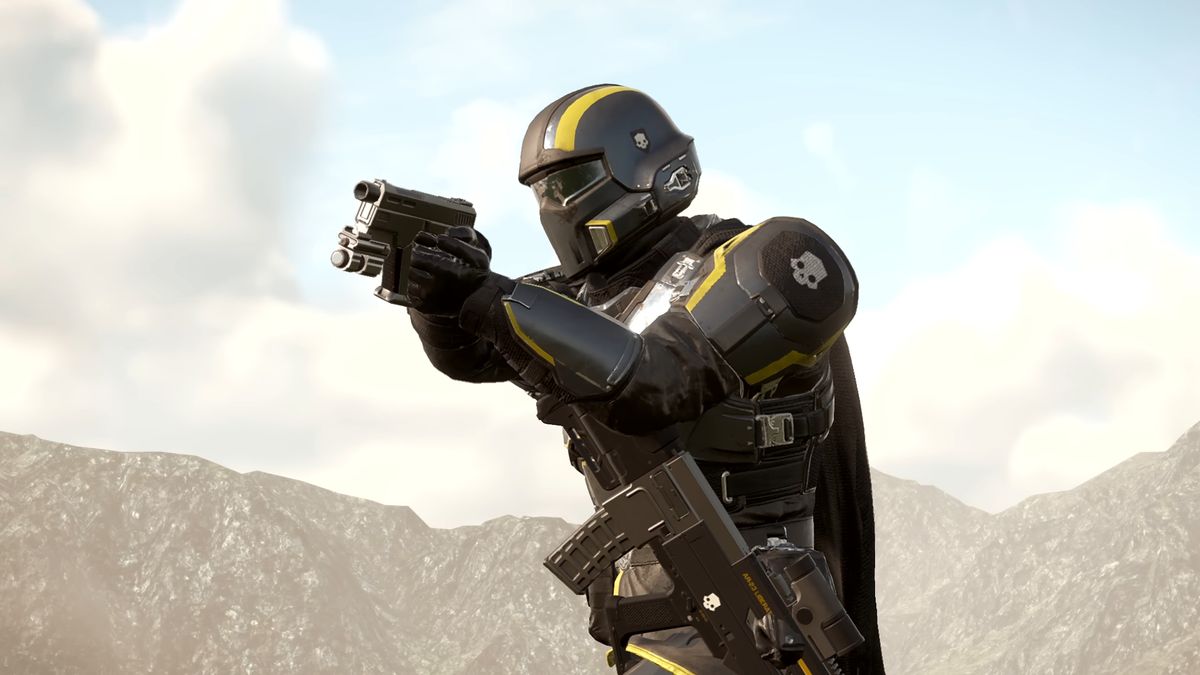
 www.pcgamer.com
www.pcgamer.com
I think this goes to show game can still have a great launch despite glitches and live-service element, as long as they have a solid gameplay.
Too bad it seems like one in a million chance these days

Helldivers 2 drops to Mixed reviews on Steam, but more people than ever are playing
The server issues and broken matchmaking haven't stopped players from diving in.
I think this goes to show game can still have a great launch despite glitches and live-service element, as long as they have a solid gameplay.
Too bad it seems like one in a million chance these days
Yeah, this one has my interest. I might- might- violate my "no launch day buying" policy for this.Pacific Drive looking good so far, sounds like Stalker but with a car on roguelike journey into a 'The Mist' type government classified scientific disaster! 2 days left to wait
My guess is you wont miss anything. It'll be more Elden Ring and be releasing this summer or something.
Goddamn it, right on my jury duty!
Better guess is you won’t miss anything. We all know how salty you are over this game, like Miyazaki himself shit in your Soul-O’s or something.My guess is you wont miss anything. It'll be more Elden Ring and be releasing this summer or something.

.png?width=690&quality=75&format=jpg&auto=webp)
